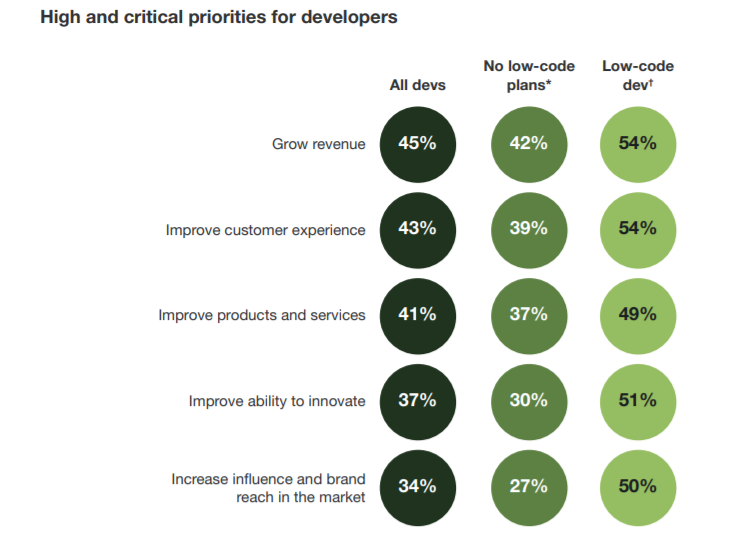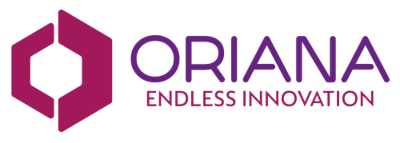Prepare for a little turbulence
Change is good. Change is essential. Change is often painful. Every business is driven by the need to innovate, offer more, and deliver services more quickly and efficiently. This is especially the case when an organization starts on the road to digital transformation because it touches every operational aspect. Digital transformation can be far more than just grafting new technologies onto a business because it often means changing the culture of companies too. Technology is a tool to enable change at a fundamental level. From back-office functions, through customer engagement, tendering, billing, sales… you name it, the changes will be widespread, and you can bet that the road will have a few bumps in it.
These bumps include having to deal with antique processes, data, and content which has become buried in the system, and technology that long ceased to be ‘cutting edge’. In fact, the edge is now remarkably blunt. However, things don’t have to be quite so difficult.
People and machines
What people do quite well is the deal with other people, and that’s where businesses should ideally concentrate their human resources – in bringing flair and intelligence to helping others, and solving problems. Emotions, intuition, and creativity are perhaps not always valued as much as they could be, and yet these qualities provide the spark that makes a company great. As yet our business systems don’t spend the day having ‘bright ideas’, and we’d start to get seriously worried if they did take time out from their mundane number-crunching tasks to do a spot of brainstorming. That’s not what we pay our expensive ERP systems to do.
For most companies, the actuality of change and digital transformation involves a lot of people’s time in getting the system to do what’s required of it. This means repetitive tasks for the humans (with the strong possibility of bugs being accidentally added to the mix somewhere along the line). While humans are good at intuition and creativity, they’re generally bad at boring things which require constant accuracy, and no deviation from the plan. However digital transformation isn’t going to do itself, so highly-skilled people get tied up for months affecting changes.
Being close to the business
Meanwhile, one of the issues of having expert coders and developers effect the required changes is that they are often somewhat distant from the real needs of the business. They are looking at things from the technological level of the system, rather than necessarily the end-users, both internally and externally. And so things take a long time, and changes aren’t always as useful or usable as they should be.
There are people inside the business who know what the real needs are, because they use systems and programs day in, day out. They’re the Customer Service people, the Sales Reps, the Accounts Department, and all the others who rely on a smooth functioning backbone system. However, ask any of them if they are adequately supported by that system, and you’ll probably get quite an earful of complaints about its failings. And this is even after a long process of digital transformation. Yes, the transformation has taken place, but it’s still not delivering quite as required, across myriad pinch points.
Enter Oriana
The obvious answer would be to consult with all the users within a business, and let them co-design their ideal system. But consultation requires consultants, who then eventually architect a system, before handing it over to the developers. The arrival of no-code and low-code platforms – such as Oriana’s Effector – has radically altered this unsatisfactory procedure. Effector is an intuitive yet powerful workflow-driven digital process automation (DPA) platform, available both in no-code and low-code formats. No-code platforms allow the actual users and ‘citizen developers’ of a system to intuitively ‘play’ with their ideal workflows and application layouts, based on their own knowledge and experience.
Effector can sit on top of ERP and other legacy systems, so no deep level changes are made while processes are auditioned. The graphical workflow designer allows users to easily ‘taste and try’ set-ups, and preview outcomes. This can be significantly faster than other forms of ‘consultative’ design, often taking only weeks.
Playing to win
Once this phase has been completed, the business is essentially at a Go/No-Go decision gate. If the decision is to move forward based on the proof of concept, the low-code platform enables a faster development cycle compared to traditional coding. Time savings of 50% are not uncommon in the low-code world, meaning a faster time to business.
With the low-code approach, blocks of code or functionality are added from content libraries and, in the case of Effector, SQL is used to finalize the customization. SQL is the most popular, modern, high level language to manipulate, analyze data and express business logic based on data.
Once this iterative trial-and-error approach is complete Effector Studio’s no-code platform can be handed on to the full Effector platform low-code approach. We have entered the realm of that relatively new creature, the Citizen Developer. CDs are possibly without coding knowledge, but they do have specific use-case knowledge. They may be familiar with SQL, which is how to talk with Effector, and can easily be trained to code using no-code and low-code platforms.
In a 2019 report from Forrester on low-code trends1, it was found that low-code developers ‘Have a greater sense of urgency when addressing business priorities.’ At the same time, they, ‘Feel more confident in their abilities… with the ability to deliver greater value, meet business priorities, and become an agent of change.’ These are exactly the sort of people you need onside in accomplishing digital transformation.

Naturally, the final arbiters of how Effector integrates with the system are the company’s IT department, so there is no risk of digital anarchy breaking out!
The process of reaching meaningful digital transformation, which truly adopts real use-cases from the people who know what is needed, is swifter and easier with low-code/DPA platforms. Effector makes things even better by having a vast library of ready-to-use applications for every workflow, all of which can be readily customized. Job done then?
Repetition, repetition, repeti…
Not quite. Let’s say we’ve got a long way down the digital transformation path, but returning to the question of what people do well, and what machines do well, we still haven’t addressed the repetitive processes which every business must engage in. If people do them it opens the system up to error, and is hardly a useful way of using the hearts, minds and talents of employees. Giving repetition to the machines is clearly the smart idea, but then that takes a zillion hours of programming to get right. Time to call in the bots.
Robots do not get bored, or feel the need to regularly check their smartphones. They do repetitive tasks extremely well, releasing humans to do more productive things. Robotic Process Automation, or RPA, is now being used to automate many low-level jobs, such as processing regular invoices, putting together and emailing sales reports, and transferring data between applications to update records. The time is also not far off when RPA will function as a helpmate to people working on higher level tasks.

Like Effector, RPA ‘sits on top’ of the system, so it works at user interface level across applications, helping to free up people, and providing step-by-step automation. This can be achieved without the involvement of IT, or indeed external consultants. Forrester’s 2019 report on RPA2 noted that, ‘Customer service leaders recognize the importance of delivering customer service experiences in line with customer expectations to keep satisfaction rates high and churn rates low. They’re increasingly turning to RPA. RPA is a tactical, short-term fix to digitize common, reproducible agent tasks. It quickly and easily extends the life of contact center apps. It’s no surprise that 44% of data and analytics decision-makers whose firms are adopting automation are already using customer service robots, and another 22% are planning to implement them in the next 12 months.’
Sitting on top of the world
Because RPA and low-code solutions such as Effector require no ‘deep’ changes to the system, they are natural allies, providing complementary services and giving ever-increasing scope to a business. This excellent fit between technologies has led to a working alliance between Oriana and industry RPA leader UiPath. The company describes the benefits of RPA as, ‘RPA robots utilize the user interface to capture data and manipulate applications just like humans do. They interpret, trigger responses and communicate with other systems in order to perform a vast variety of repetitive tasks.’ And what processes are relevant? – ‘Essentially, any high-volume, business-rules-driven, repeatable process qualifies for automation.’ By training the ’robot’ to follow the system interactions of the human, the robot can then take over, the next time this task is required during the process.
So we have a coming-together of two innovative companies which work hand in hand to deliver a wide variety of use-cases across all industries and sectors. Anywhere that business apps are based on workflows – which is just about everywhere – RPA is deployable to solve repetitive tasks in those workflows. Effector then orchestrates the whole workflow, having been used to custom-design every aspect of the processes, usually by the actual users of the system. By first mapping the process, then digitizing it and applying RPA to the obvious process steps which would benefit, performance can be tracked, and data collected to later optimize the process to even further increase efficiency. Effector plus UiPath helps capture, manage and monitor the process end-to-end.
Change is good. Change is essential. Change really doesn’t have to be painful.
Endnotes
1Forrester Report, Understanding Low-code Developers, by John R. Rymer and Bill Seguin with Jeffrey S. Hammond, Christopher Mines, Abigail Livingston, Andrew Reese, April 8, 2019.
2Forrester Report, Use RPA To Deliver Better Customer Service Experiences, by Kate Leggett with Daniel Hong, Craig Le Clair, Andrew Dobak, Peter Harrison, November 6, 2019.



